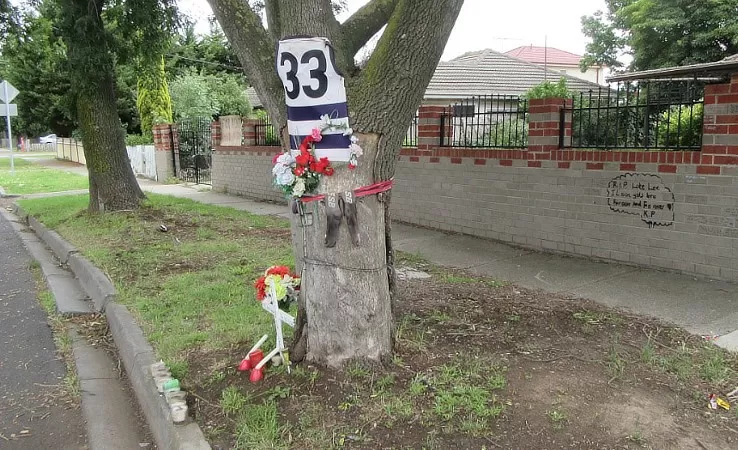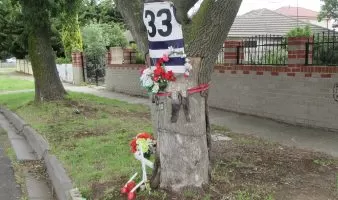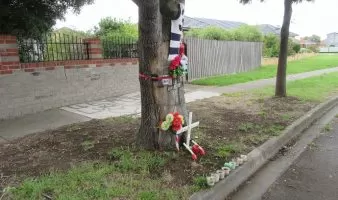While the intimate nature of the graves of Weeroona suggest a very personal relationship with death, the environment itself offers a kind of serenity. Serenity is not possible with this little memorial. One encounters this memento mori, face to face. The visceral nature of the distress is unavoidable, breathtaking even. Domestic items, socks, footy jumper, fairy lights, the childish messages on the nearby wall, all testify to the overwhelming nature of the event, a catalogue of hopeless brevity that defined the life that was snatched away. Some mourner has even felt the need to carve their grief permanently into the living flesh of the tree, an odd inversion of the usual hearts and ‘Romeo loves Juliet’.
Like the West Gate bridge, this monument marks the site of the trauma as if the geographic location itself holds some resolution. The street and tree are public land claimed here by right of occupation. The neighbouring wall is more problematic. As private land, the owner is of course within their rights to remove these anguished messages of on-going fidelity and grief but I can see it must pose a dilemma, cold and unfeeling or… a permanent testament to someone’s tragedy. Not much of a selling point! Perhaps because of this, there is something vaguely subversive about this refusal to conform to the official narrative, in its striving to make some personal sense of the utterly meaningless. And what could be more meaningless than the death of a child? I am not normally a fan of the road fatality memorials that dot our highways; crosses indicating the cost of our love of the motor car. They often seem to me instances of “compulsory compassion” for people I did not know, ironically positioned as we drive by in our instruments of death. This one however, somehow escapes my general dismissal.
The choice of who and how to memorialise is entirely and intensely political. The worker, the generals, the glorified warrior, the invisible dispossessed, the foolish youth, each are a reality but also a constructed social narrative that dictates who is and who is not worthy of acknowledgement. The form of these memorials also shapes our understanding of the events. None are merely neutral objects of loss.



